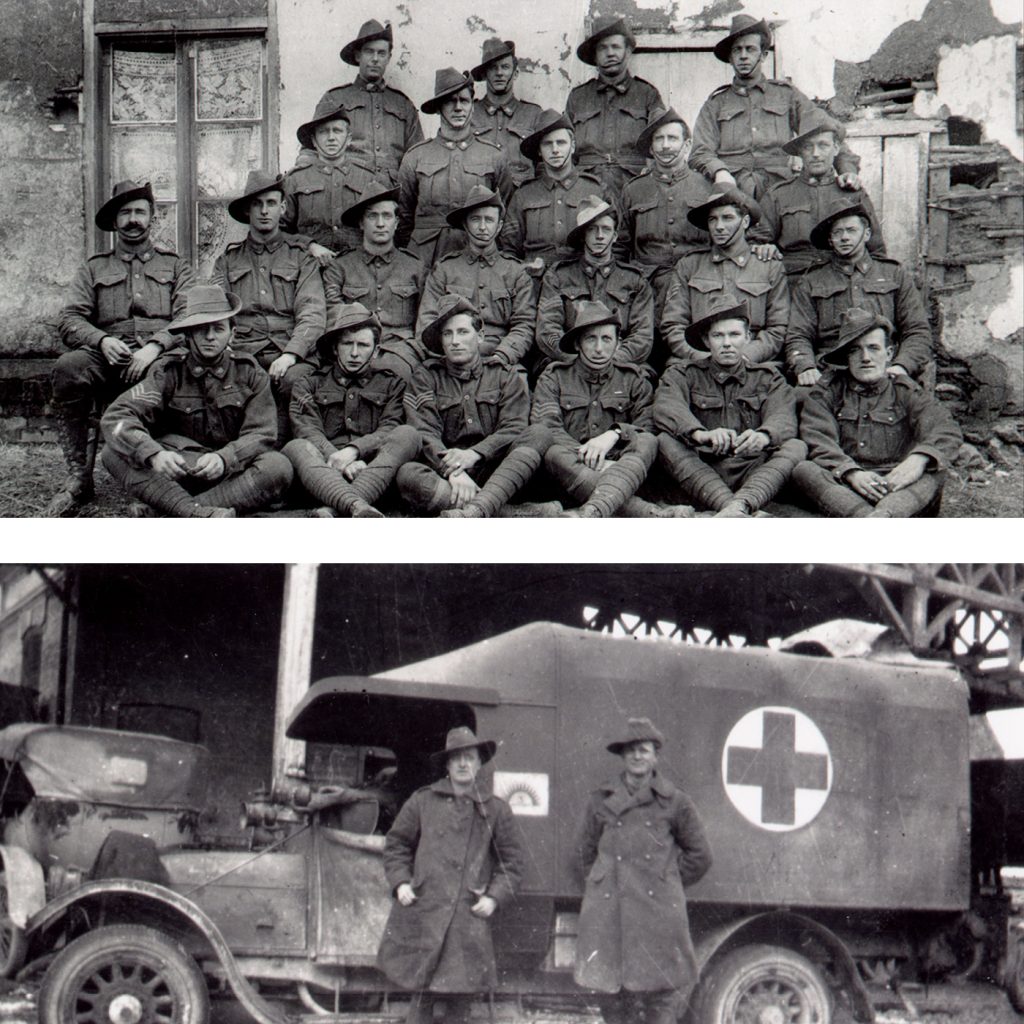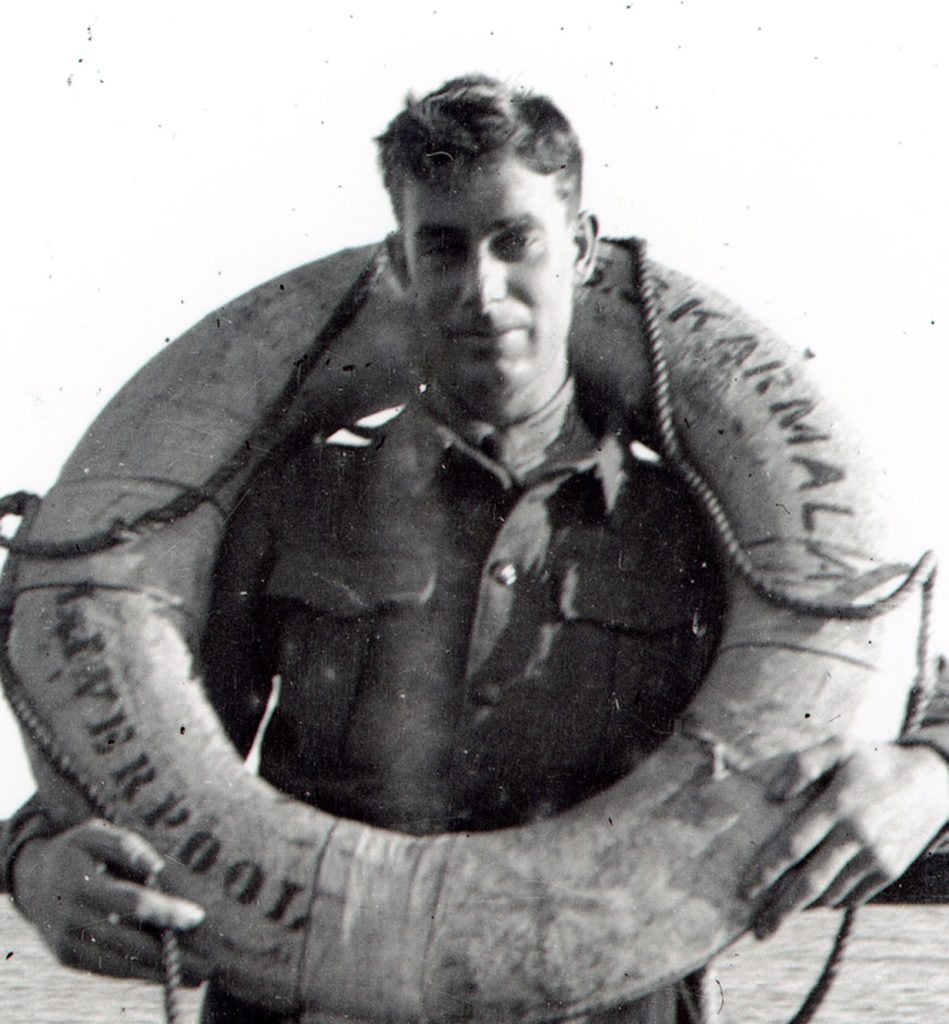John William ‘Jack’ Grinton was born in Kerang on February 14th 1893 and was the oldest of 7 siblings born to Hughina and John Grinton. Before the war he worked on the family farm, known as ‘The Wattles’. He enlisted in Bendigo on February 3rd 1916, just days after his 17 year old brother Albert ‘Bert’ had lied to recruiters about his age in order to enlist.
Jack was a man in love with life. Diary entries written while enroute to the Front on the HMAT Runic describe the sea as looking like glass, and the sun rising ‘as red as fire’. He didn’t record any fears of going to war – he is only excited by his journey. The entries are poetic and show him to be an empathetic man.
Serving together in Belgium and France as part of C Company in the 38th Battalion, the 2 brothers shared their wartime experience, and were separated only when wounded or on leave. Against all the odds they both returned home safely in August 1919, and settled on neighbouring farms on the outskirts of Bendigo, yet like most Veterans of the Great War, they seldom shared the details of their service with their families.
Image their surprise then, when in 2007, almost 90 years after the brothers return from the war, a remarkable discovery emerged – hidden in a biscuit tin in a shed on Bendigo’s outskirts were 896 photographic negatives. Despite the ban on Allied Soldiers on the Western Front carrying cameras, Jack and his brother had captured a remarkable series of deeply personal photographs that depict a side of the war that was not recorded by official photographers.
Those negatives, which like the 2 brothers survived against all the odds, were the start of the BMM’s Grinton Collection, which now includes over 1,500 images, postcards, one of their contraband cameras, and various other objects. It stands as a unique and personal record that sheds light on the adventures of 2 local boys, the often-overlooked everyday experiences of war, and provides a more textured understanding of the ANZACS on the Western Front.


BMM: 37-39 Pall Mall, Bendigo 3550 (directly opposite the original Myer store).
Phone: (03) 5442 4513
Email: museum@bendigorsl.com.au